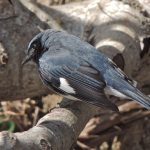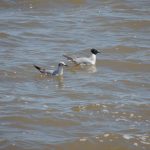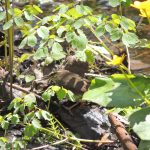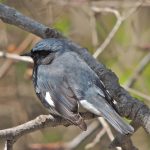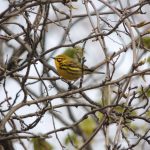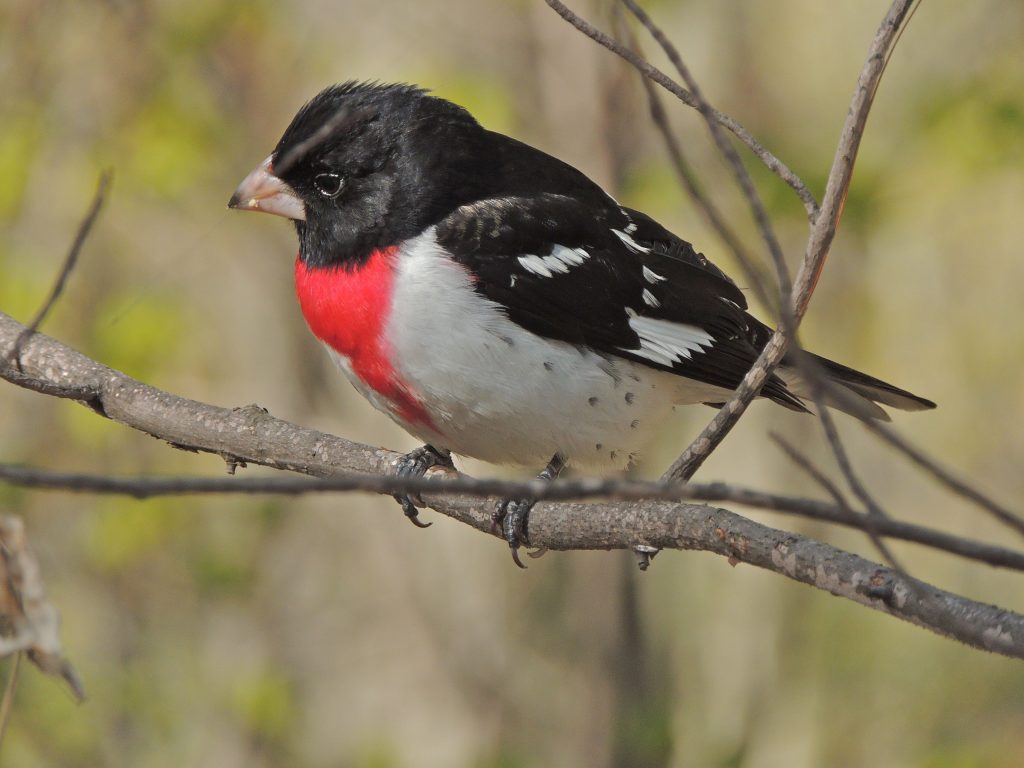May 10 2017 Paletta Park Burlington, ON. I don’t know where to start with today except that well, it’s mid May, and if the birding is good, that’s as it should be. I spent an almost indecent stretch of time checking out favourite birding spots and two out of three were very rewarding. The not-so-good one yielded a single calling Virginia Rail barely meeting my minimum standards for a thirty kilometer drive. Still, just around the corner from it I found a pair of Merlins who looked as though they were setting up home.
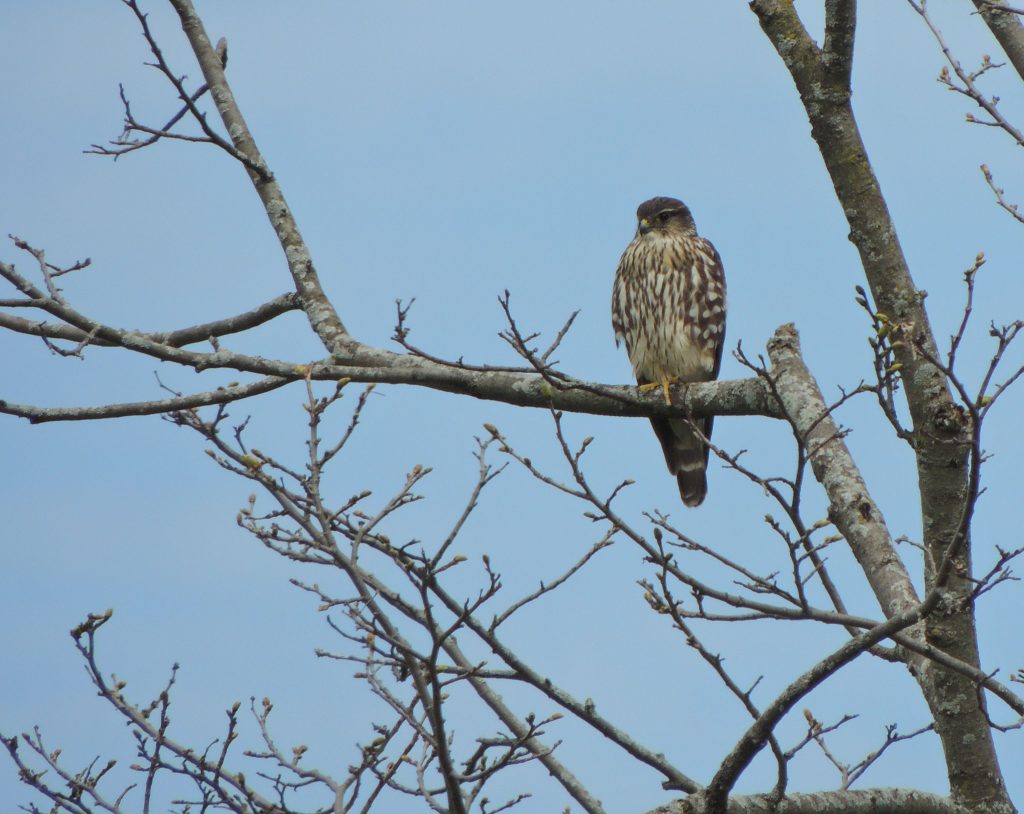
But the best experiences of the day came not far from home at a small lakeside park with a rambling old stone house, unkempt hedges, wet spots and a small creek. Arriving there shortly after breakfast and while early-morning dog exercise was in full swing, my first impression was that of a quiet morning. But down almost at the shoreline I could hear a faintly familiar and slightly disturbing song coming from a dense honeysuckle bush, disturbing because I felt I should know it although somehow it kept eluding me. Then a bright yellow warbler popped up showing bold black streaks on the side of its chest. Hmm, which warblers have a yellow breast and a necklace of black pearls?, Magnolia Warbler? Canada Warbler? Black-throated Green Warbler? And with that it flew up and away and was lost against a bright sky high in a nearby maple, although hauntingly it continued singing.
My brain’s Bird Song Analysis Dept. kept trying for a match while the rest of me turned to other birds: a startling Black-throated Blue Warbler and an American Redstart in particular.
Eventually, with the help of a passing dog-walker, we re-found the mystery bird and somehow fragments of memory came together and my birding subconscious started to suggest Prairie Warbler. I latched on to the idea, pulling in old fragmentary memories, then, aided by a few photos, the bits fell into place and before long I remembered when and where I’d heard that song before (eight years ago). Yes a Prairie Warbler. Here it is, Bird of the Day, rare in Ontario and a tingling start to a day that would deliver many more glorious birds.
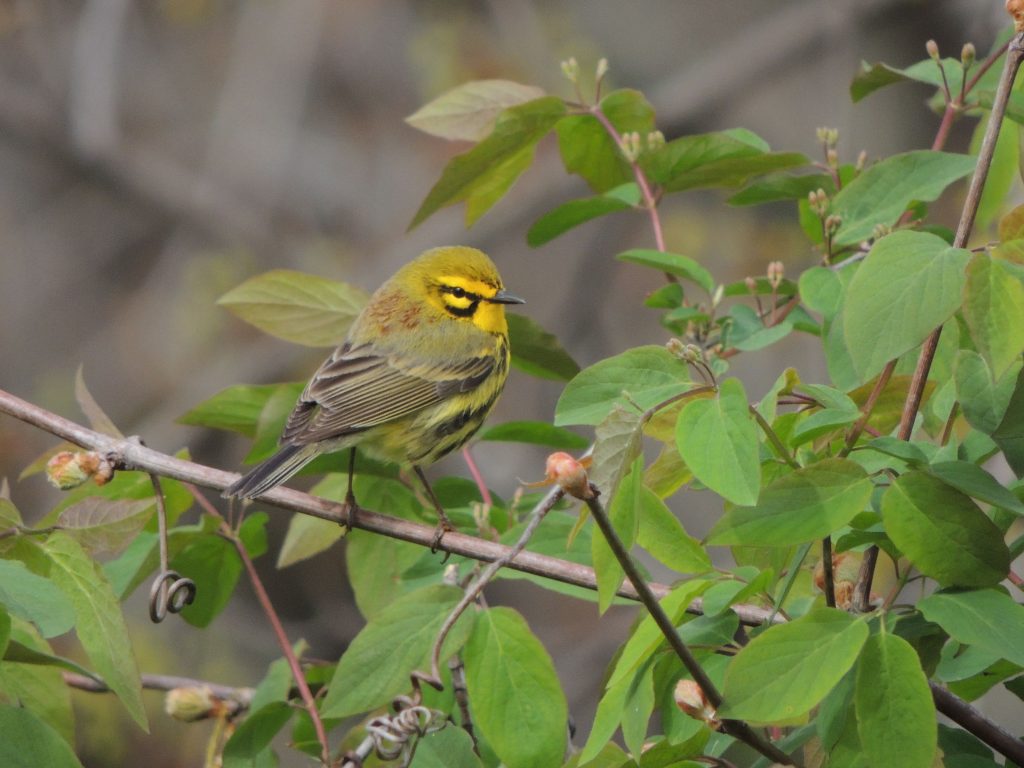
I could rattle off a string of sightings for the day but I’ll touch on just a couple more highlights. Three Merlins, one seen at the lakeside park chasing a crow hoping to make a meal of a bird three times its size and then the pair I mentioned above; three Merlins in one day is a lot!
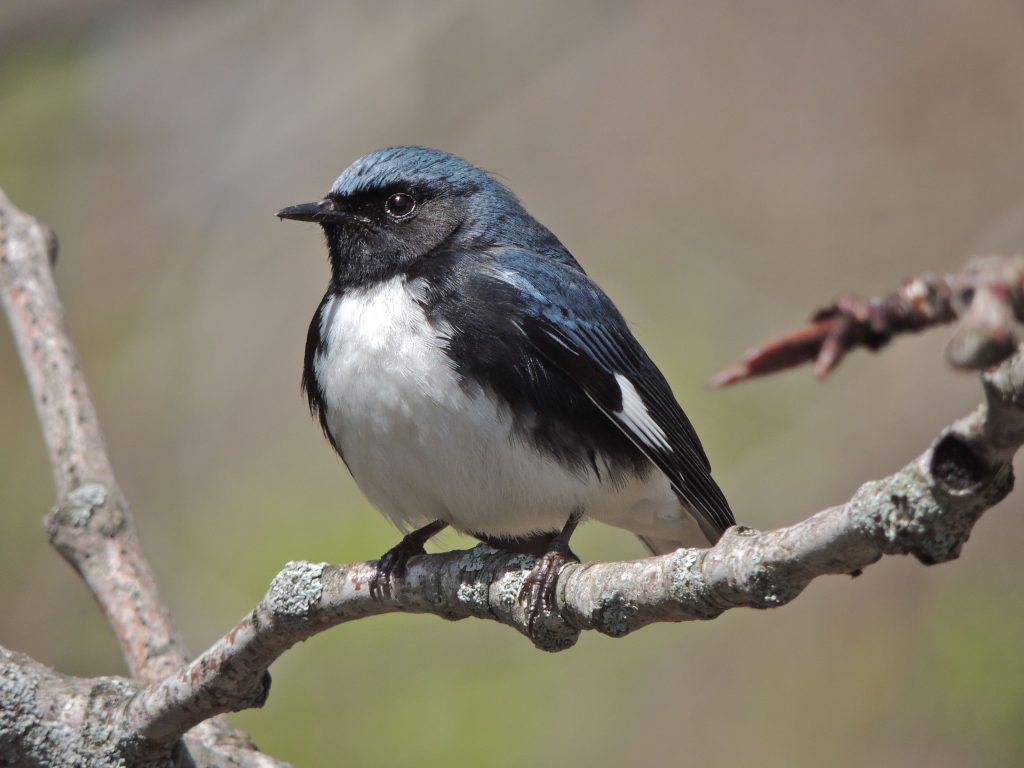
More Black-throated Blue Warblers today (all males) than I’ve seen in the past ten years I think. Some years I miss them all together, other years I’m triumphant finding just one, but this year there must be some kind special on Black-throated Blue Warblers. Spring warblers challenge my repertoire of suitable adjectives: Many are dazzlingly colourful, some subtly beautiful but none are as crisply handsome as male Black-throated Blue Warblers.
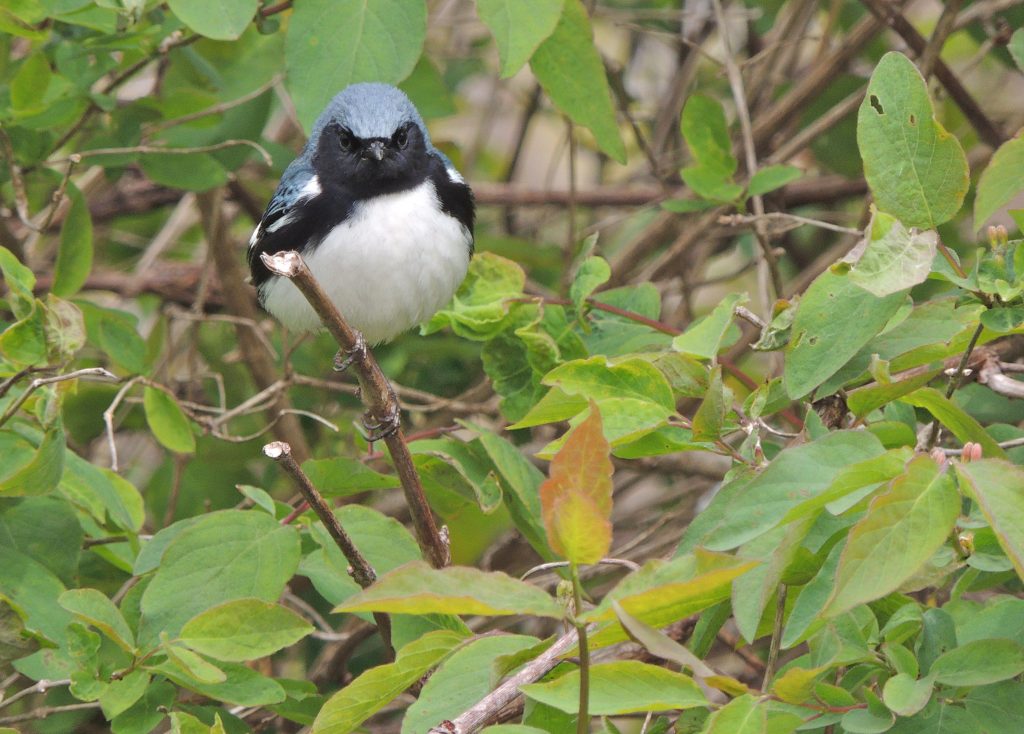
Today’s birds moved around slowly and deliberately enough for me to capture some great photos, perhaps they were exhausted. Above are my best Black-throated Blue Warbler shots followed by this gallery below of a few more. (visible only on the website not if you’re reading this as an email. Click on any image to enlarge it.)
